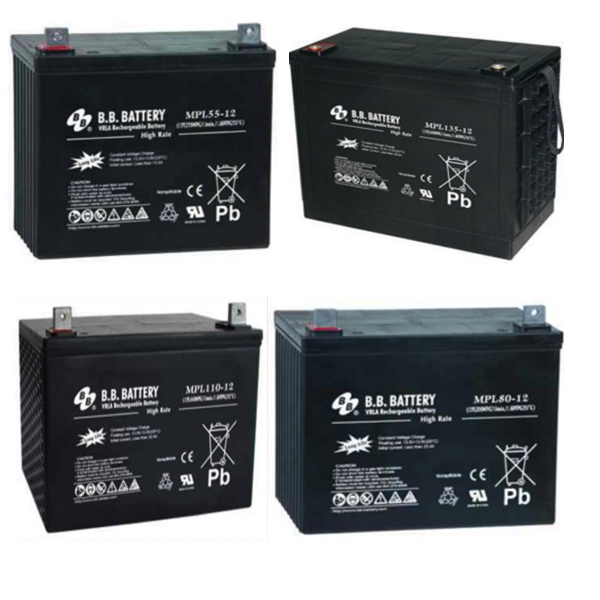Long Life Batteries

Valve Regulated Lead Acid (VRLA) batteries have a life expectancy that is based on how they are designed as well as how they are used. Three factors can affect the longevity: Temperature, Cycle Life and Depth of Discharge.
Temperature: The rated capacity of a battery is based on a narrow temperature range. When the battery is exposed to temperatures outside of that range, the usable life will be shortened.
Cycle life: This is the number of charge and discharge cycles of the battery. The more discharges and the deeper the discharges, the shorter the battery life.
Depth of Discharge (DOD): This is the percentage of the battery that has been discharged relative to the battery capacity. When a battery is discharged entirely or past the maximum recommended DOD, the battery life will be shortened.
Long life batteries are considered a hybrid of deep cycle and high rate batteries with the added benefit of enhanced floating life. Deep cycle batteries provide continuous power output over long periods of time and can withstand repeated charge/discharge cycles at 80% DOD. High rate batteries deliver high power for short periods of time at 50% DOD with a 14-16 year life.
Float mode, also known as standby mode, is maintaining a battery in a charged condition by a long-term, constant voltage at a level sufficient to offset self-discharge. An enhanced floating life allows long life batteries to be ready for use in high rate, heavy duty applications such as uninterrupted power supply, telecom and marine environments.
How to wire batteries in either series or parallel and battery selection criteria
- Voltage requirement of the load. Most batteries produce 12 Volts DC, so if the load requires more than 12 Volts, this can dictate how many batteries to use and how to wire those batteries.
- Capacity of the battery. This is measured in AMP hours. Each battery has a specific AMP hour rating. For example, a battery that has a 10 AMP hour rating means that battery will supply power at one amp for 10 hours, or another way to look at it might be that a 10 AMP hour battery can supply 10 amps for one hour.
- Number of batteries needed. Once the voltage and capacity requirements of the system are known, the number of batteries and wiring configuration can be determined.
Wiring batteries in series increases voltage, but does not increase the capacity or AMP hour rating. Wiring batteries in parallel increases capacity, but does not increase voltage. Combining both wiring methods will increase both the voltage and capacity.
Let's use an example where we have a control panel that needs 24 Volts of power and needs 15 AMP hours of capacity. Let's also assume that we have four batteries that are 12 Volts each at 7.5 AMP hours. We first take two 12 Volt batteries and we wire those in series. When we wire in series that's the positive terminal to the negative terminal. This will give us 24 Volts for these two batteries. We then go to another set of two batteries and wire those in series as well. We now have two banks of batteries each providing 24 Volts. Keep in mind that each bank is only providing 7.5 AMP hours of capacity. In order to reach the 15 AMP hours of capacity that we need, we will need to wire both banks together in parallel. That will increase our capacity to the 15 AMP hours. From the first bank, we wire the positive terminal to our load and we also wire it to the positive terminal on the second bank. We then wire the negative terminal on bank one to our negative DC bus and also to the negative terminal on our second bank. We now have met both requirements of 24 Volts as well as 15 AMP hours of capacity.

